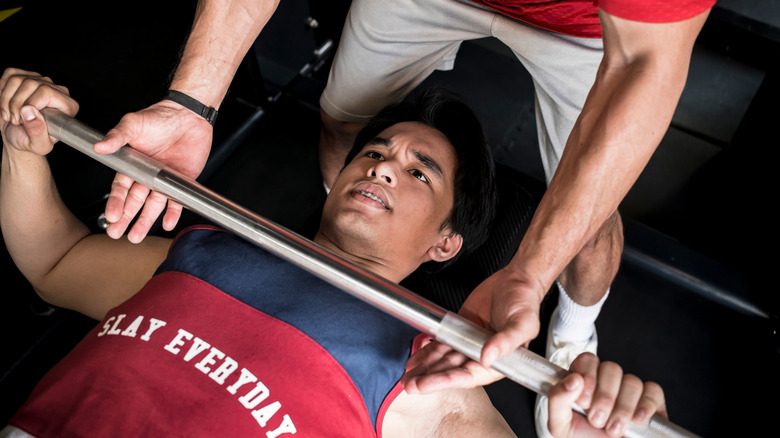Why Bench Presses Are Hurting Your Back
A bench press is an upper-body weight training exercise that involves pressing a barbell with weights upward while lying on a bench. According to experts at Byrdie, bench presses can help improve upper-body strength, build muscle mass, and boost endurance. That's because bench presses target nearly every muscle in your upper body, including the deltoid and pectoral muscles in your shoulders and chest, the latissimus dorsi muscles in your back, and the tricep muscles in your arms.
Bench pressing can be a solid addition to your workout routine. "Through mastering the movement, you'll learn a lot about upper-body pressing that will carry over to other exercises and physical activities," William Thompson, a certified personal trainer at RightFit Personal Training, told Byrdie. If you've never done them before, it's a good idea to start with light weights so that you can perfect your form. Without proper form, doing bench presses can hurt your back and put you in unnecessary pain.
Improper form can put stress on your back
When you're doing a bench press, you want to pay careful attention to your form. That's because doing a bench press incorrectly can really strain your back and potentially cause injury. While bench pressing should cause your muscles to burn to some extent, you shouldn't be in any pain. If you feel serious discomfort, correcting your form might be in order. According to LiveStrong, your feet should always remain flat on the floor while performing a bench press.
Before you press any weight upwards, your back should assume its natural, neutral arch as it rests on the bench. Spreading your feet a bit wider than shoulder-width apart and keeping them flat on the floor will give you greater stability. As you press the weight up, you want to engage your core to put little stress on your back. Also, it's important to stretch your hip flexors beforehand, because tight hip flexors — especially in the hip-extended position of a bench press — can seriously strain your lower back. If you take 5 to 10 minutes to stretch first, you can improve your performance and reduce your risk of injury (per LiveStrong).


